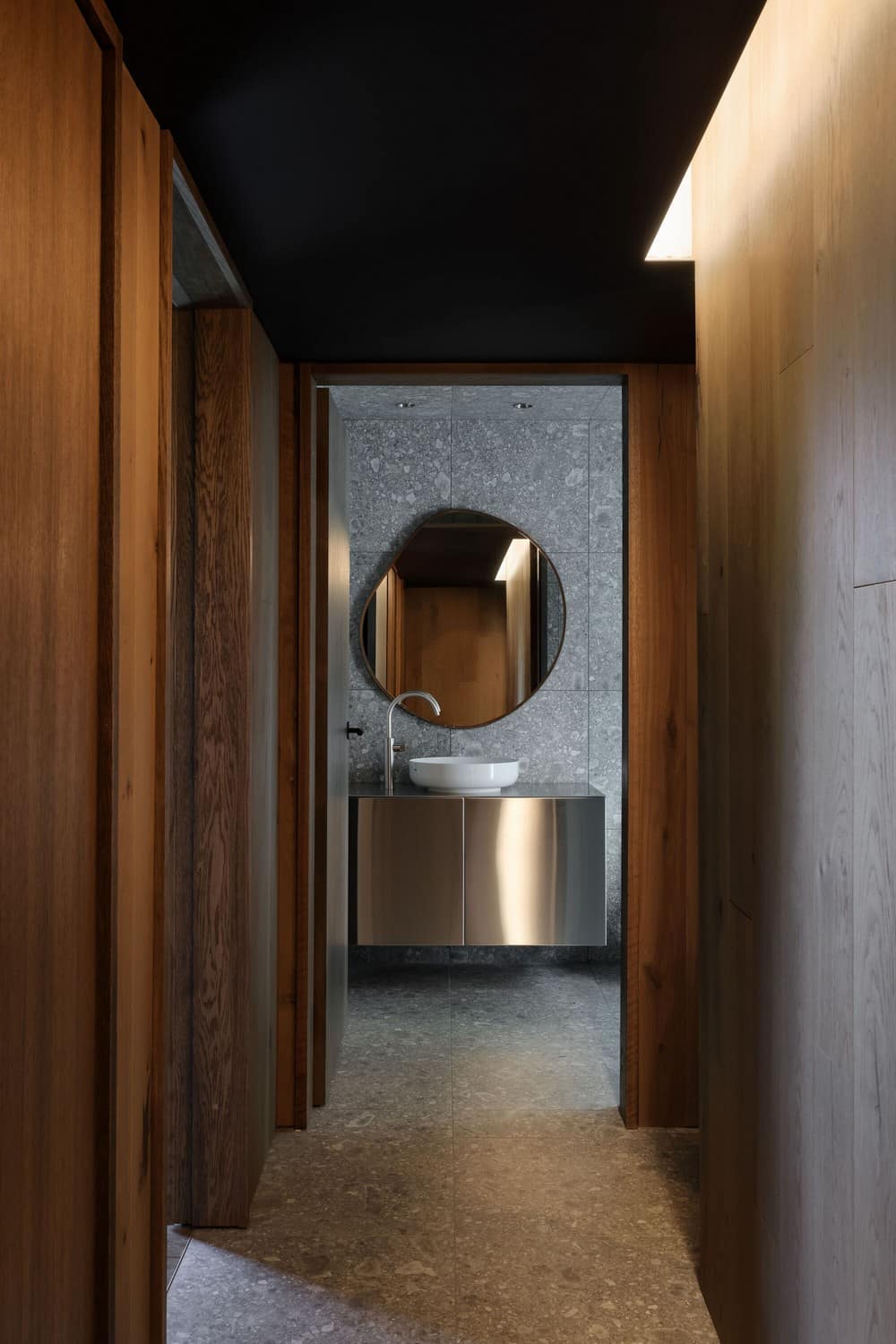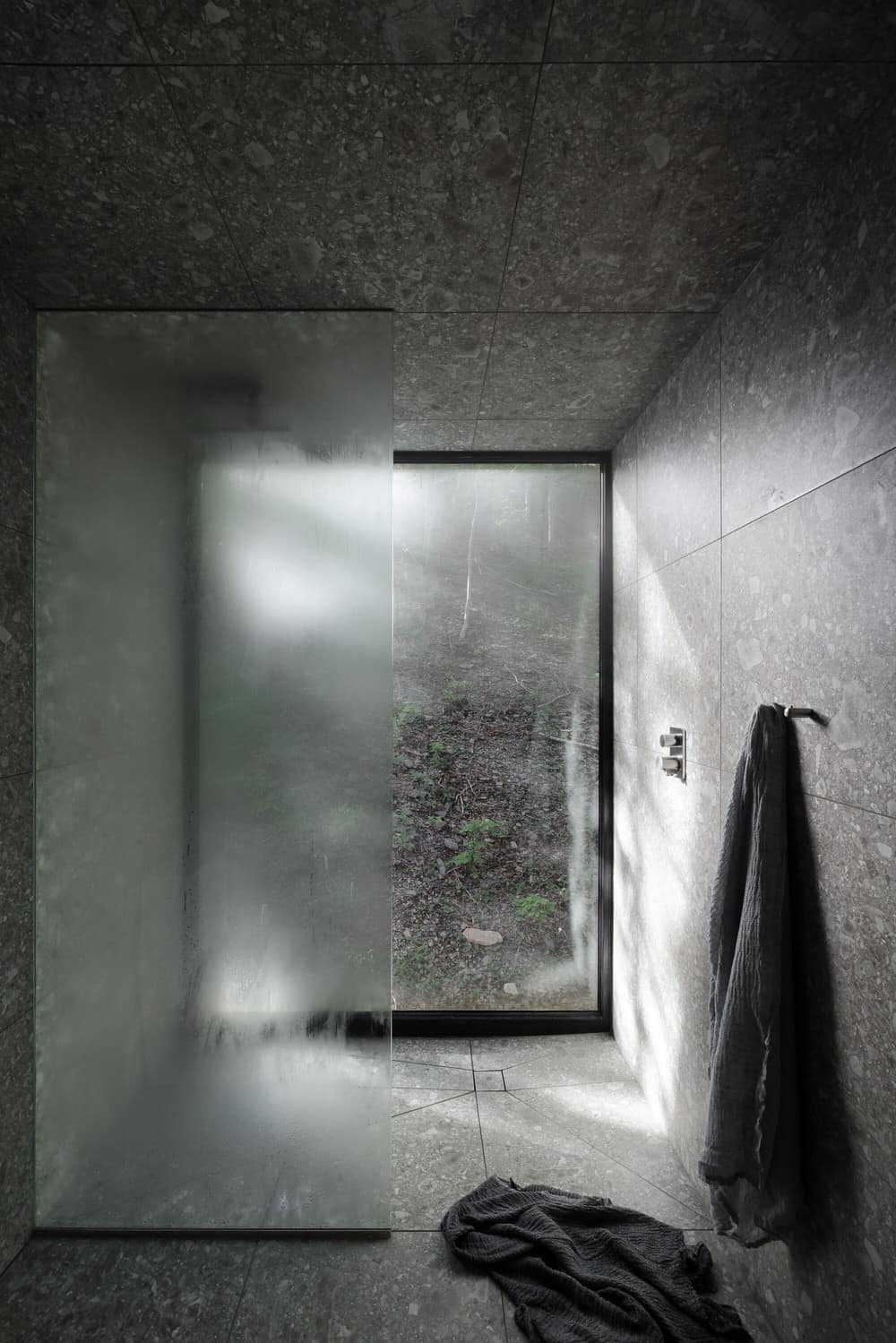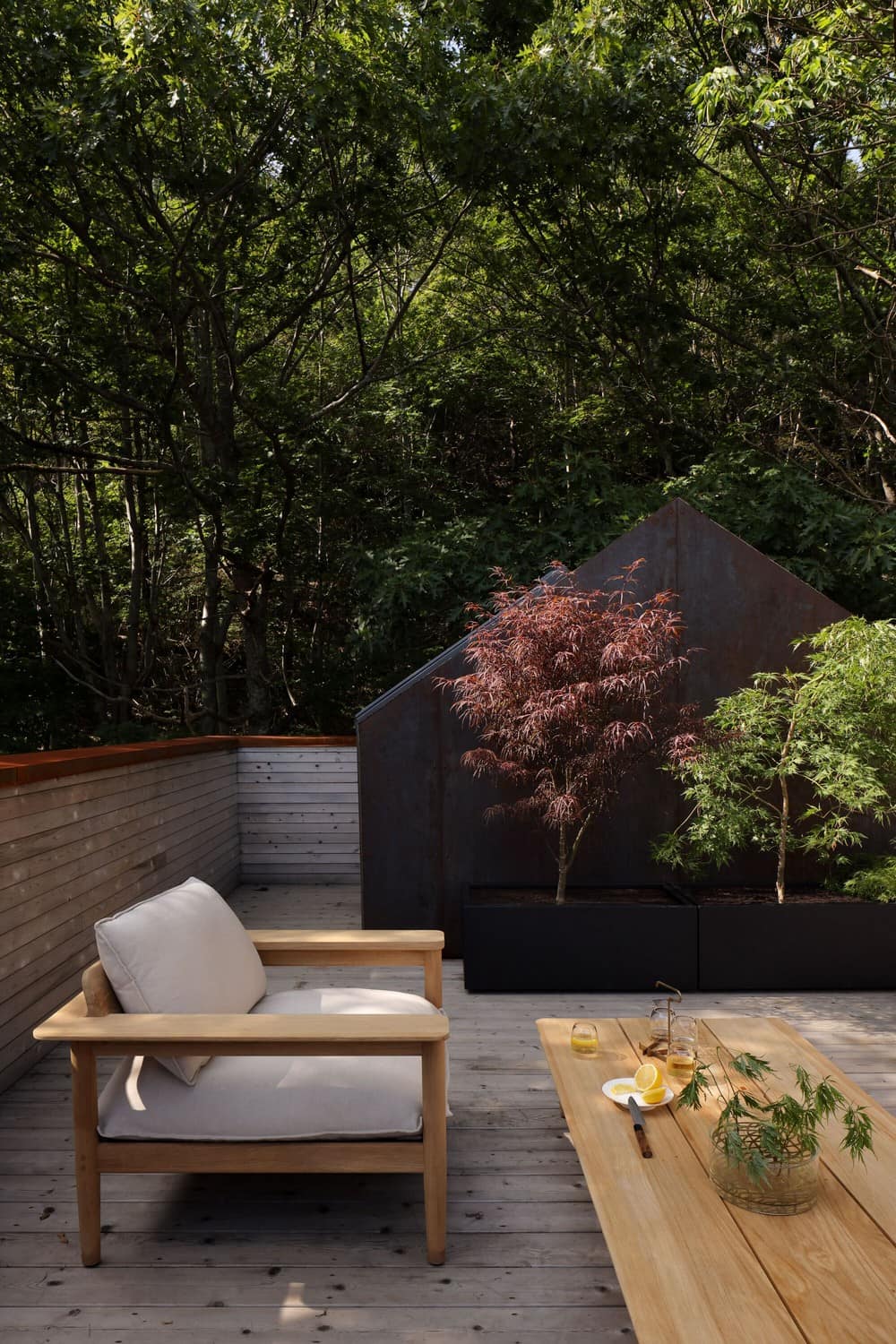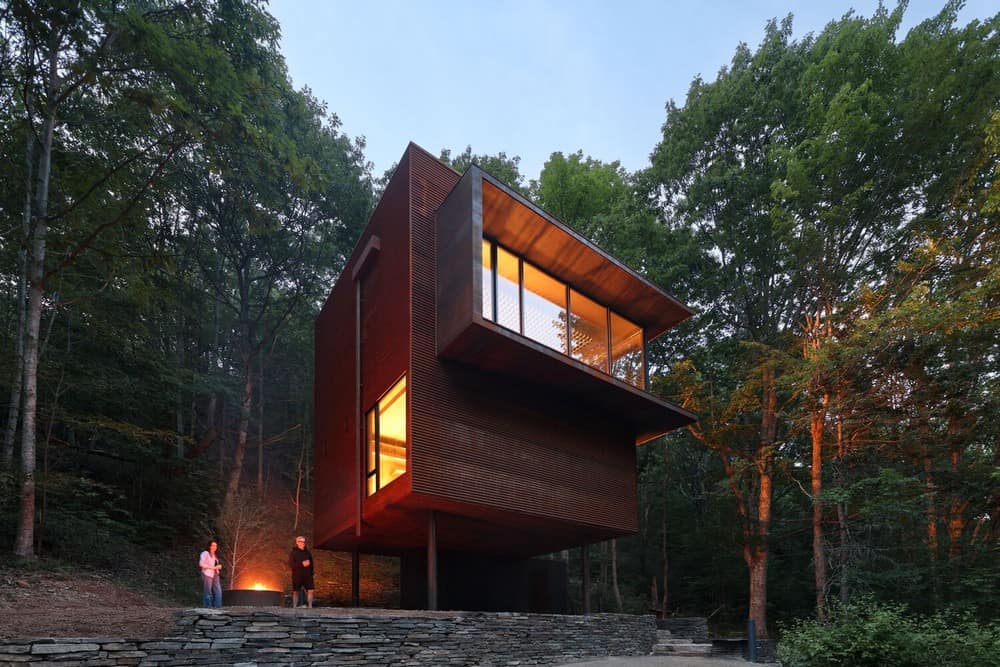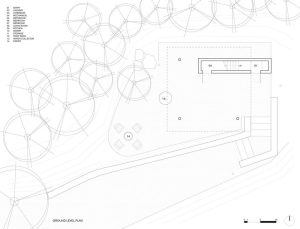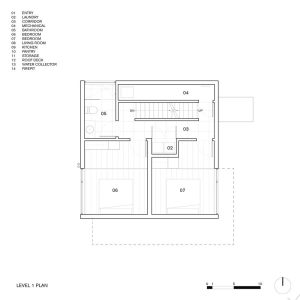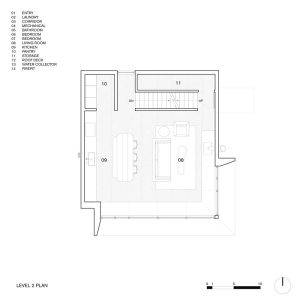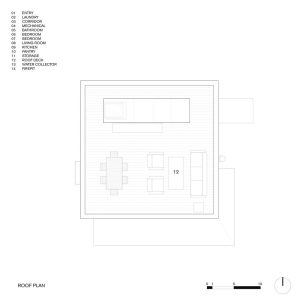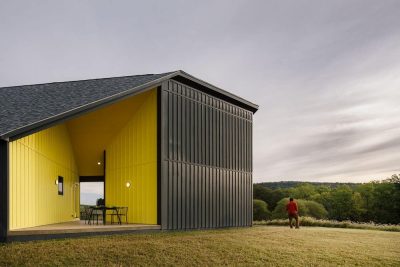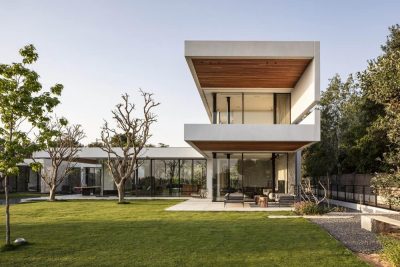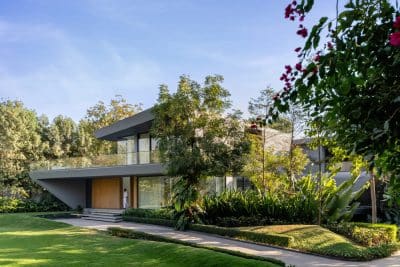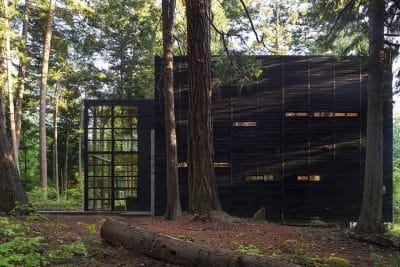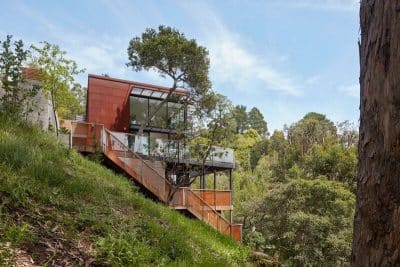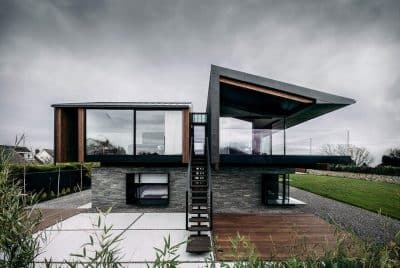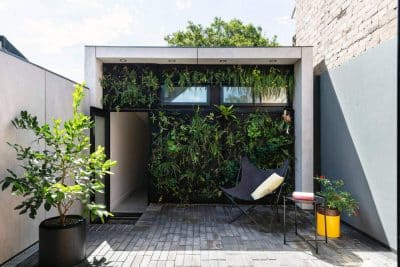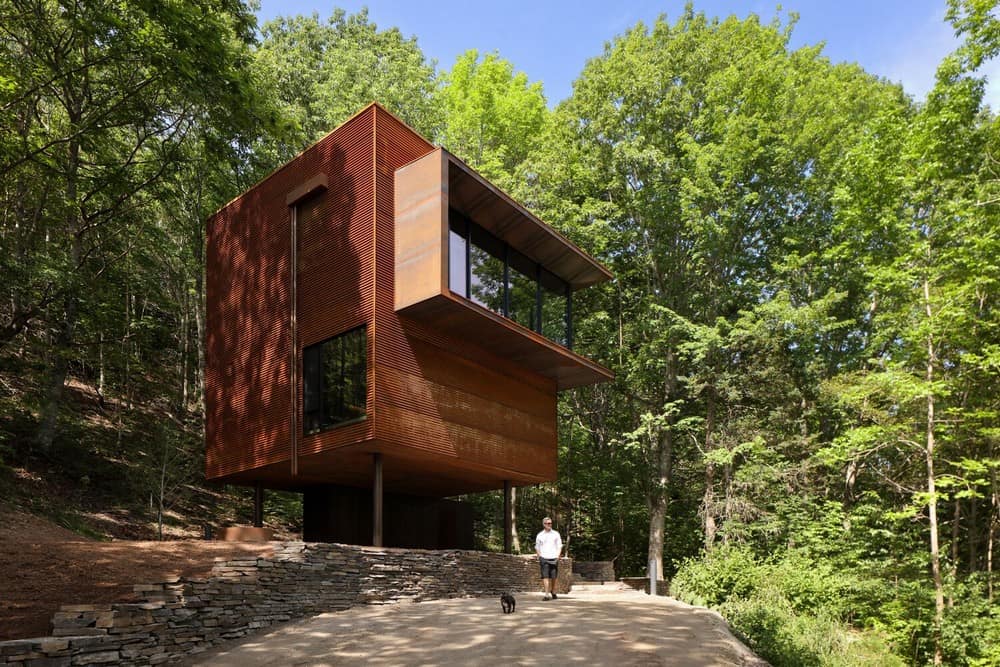
Project: White Rock House
Architecture: Omar Gandhi Architects
Design Team: Omar Gandhi, Chad Jamieson, Kelly Cameron, Justin Cormier, Jonah Samson, Andrew Hooke, Kristi MacDonald, Craig Morris
Landscape: Trim Landscaping
Structural Enginer: Andrea Doncaster Engineering
Specialty Steel: Urban Handcrafts, Filo Tim
Location: Gaspereau Valley, Nova Scotia, Canada
Area: 1500 ft2
Year: 2023
Photo Credits: Ema Peter
Text by Omar Gandhi Architect
At the end of a long and winding driveway through the forest, White Rock House is perched above a steep rocky incline overlooking the north bank of the Gaspereau River Valley. The valley is the home and the unceded territory of the Mi’Kmaq indigenous community and has deep roots for the Acadian community who named the river after the gaspereau fish.
Located south of the town of Wolfville, Gaspereau Valley is an agricultural community with an abundance of dairy farms and apple orchards. In recent years, the valley has become the home of Nova Scotia’s premiere vineyards and cideries. At the base of White Rock is one of the region’s most celebrated vineyards.
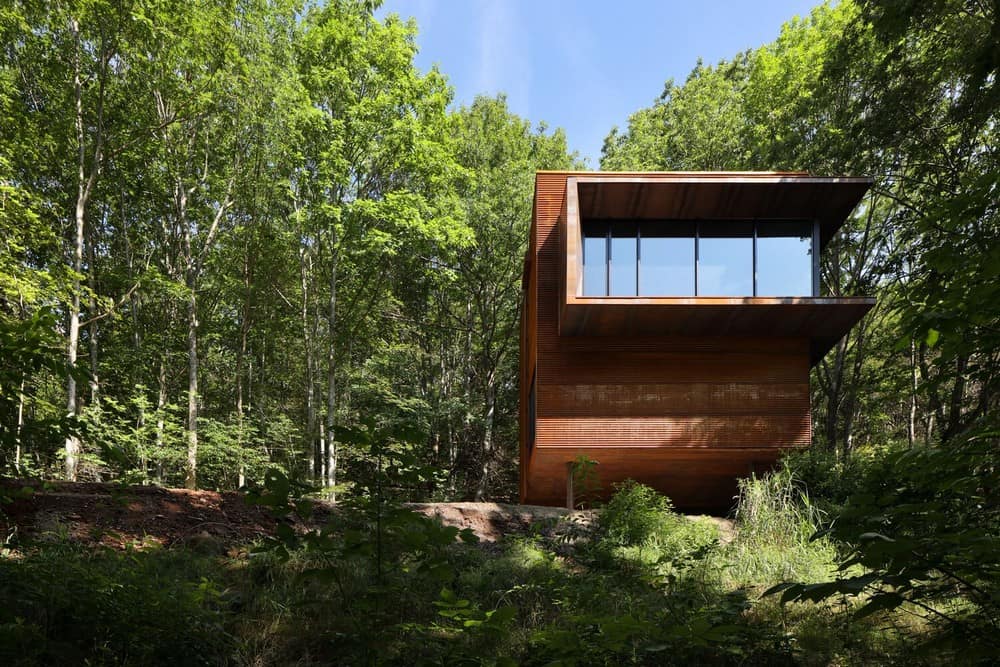
White Rock House was designed as an escape – not in the traditional sense of a cottage but as an opportunity for solitude high above the valley floor with expansive views above the tree line. It is a place to disconnect and rest – providing friends, colleagues and family with the environment and opportunity for improved mental health.
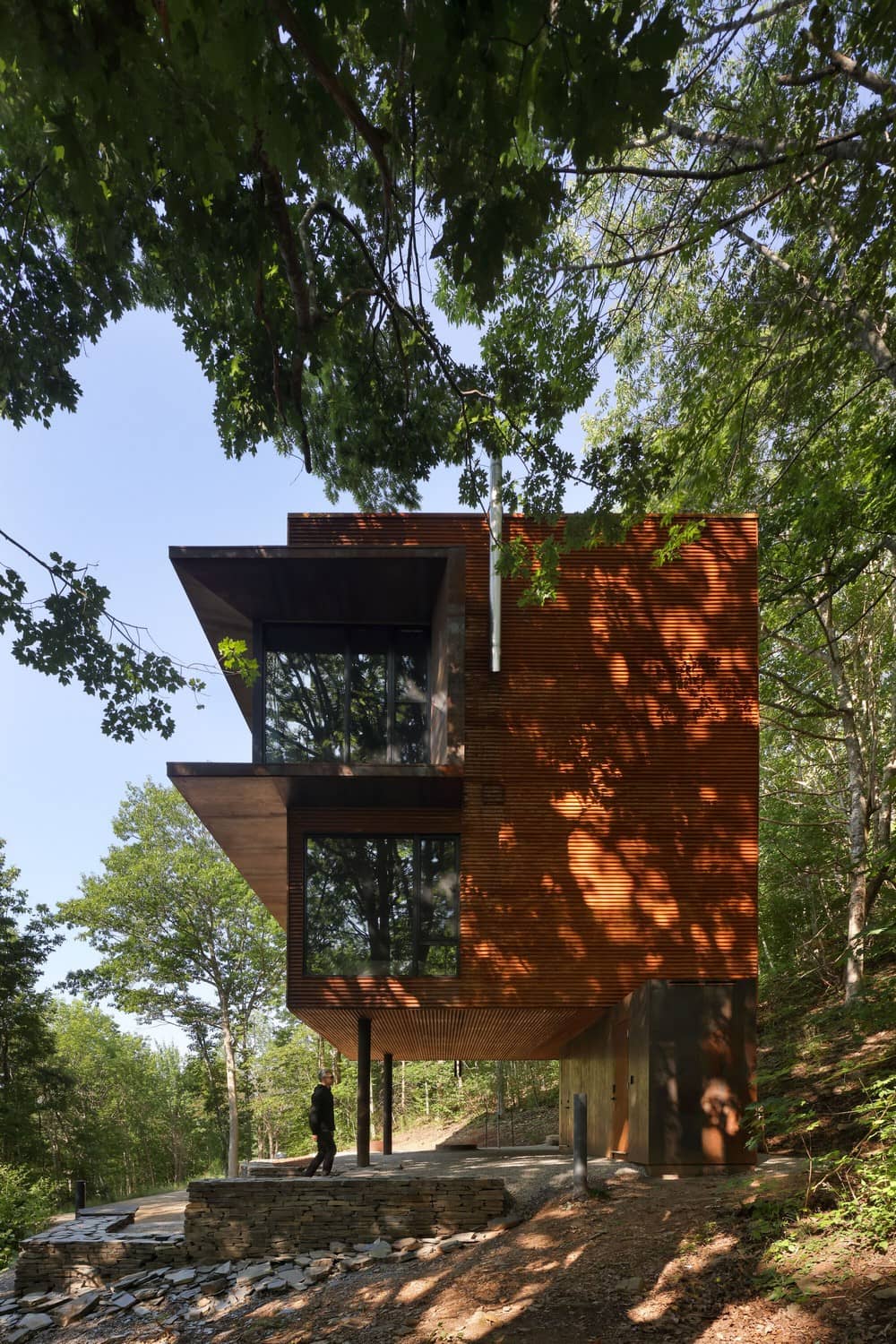
A steep uphill driveway and tight hairpin turn lead to a gravel path only accessible by foot. The procession slows down the approach, enhancing the sensory experience of being completely immersed in nature. Upon approach, the silhouette of the cabin looks both menacing and gently perched at the top of a rocky ridge.
The steep hillside is composed of tall trees and generations of decomposing tree limbs that continue to regenerate new growth on the forest floor. Large outcroppings emerge from the hillside, creating sheltered spaces for the forest’s many creatures. A long and low dry-stacked stone wall with unbridled vegetation guides the entry procession towards the structure.
The landscape design is very raw and maintains a light footprint within its woodland environment. Rainwater is captured and stored for irrigation purposes and existing trees provide a retreat from the intense sun during the brief but warm summer months.
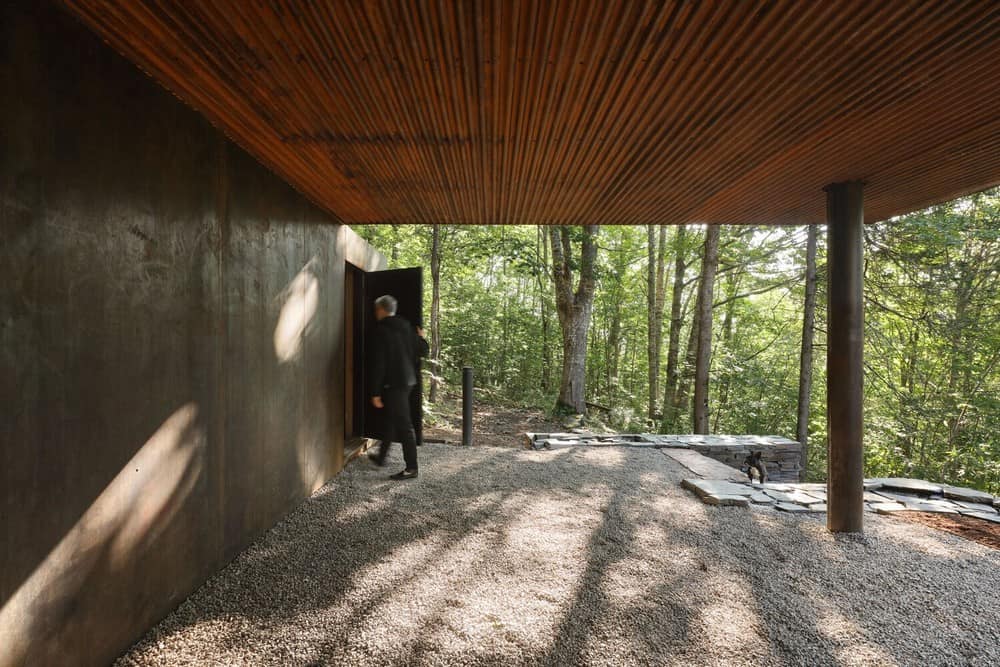
The simple form with deliberate, carefully positioned openings is inspired by traditional hunting cabins and duck blinds hidden in the dense forest. Formally, the building is a large heavy corten steel volume resting atop a series of seemingly too skinny legs. A smaller corten entry volume is recessed underneath the larger volume above and appears to emerge from the expansive rock below, anchoring the structure to site. A weathered steel surround cantilevers beyond the pure corten volume to accentuate the largest expanse of glazing on the second floor, providing views to the river valley beyond.
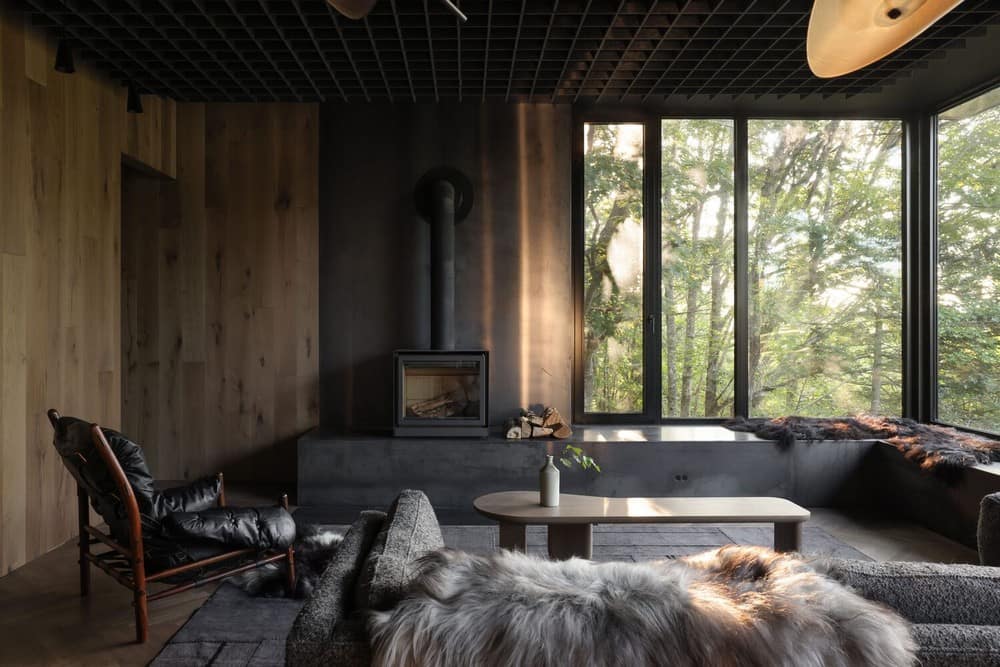
Set amidst a field of reddish dirt, rock and the ever-changing colours of the leaves, the peculiar structure finds a way to feel as though it has always been there. Its corten cladding roots the building to site and surrounding context – its warm hue reminiscent of the reddish hematitic stain that coats fractures of quartzite found in the region.
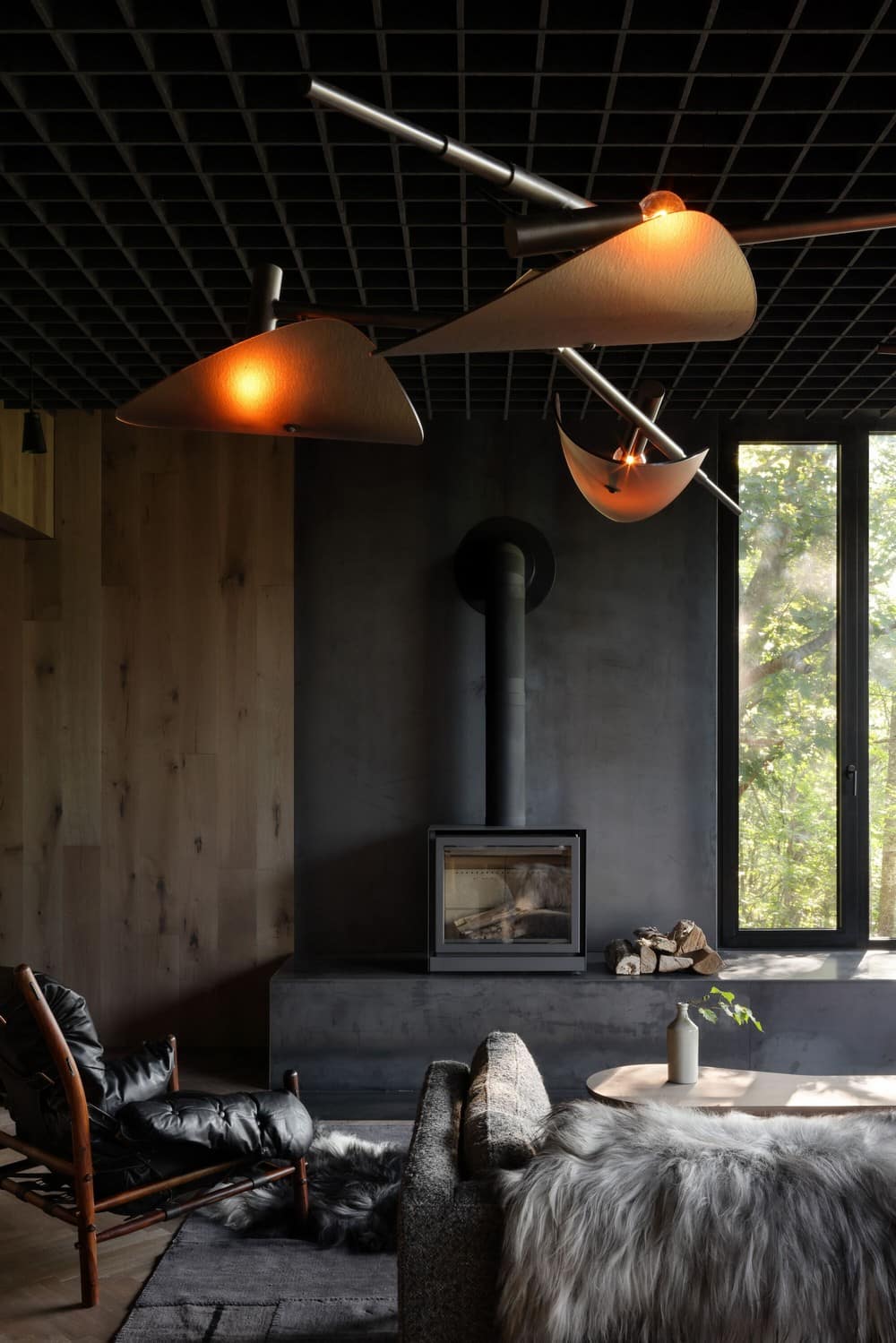
A camouflaged corten-clad door in shadow below the heavy volume above provides discrete access to within. Upon entry, the space is low, compressed and dimly lit. Two tarnished steel wall sconces illuminate the stairwell leading to the bedrooms and bathroom on the first floor.
The bedrooms are both minimal and raw – lined entirely in smoked oak with raw steel shelving and wall-mounted industrial light fixtures. The beds are covered in antique linens and hand-dyed fabrics. Large picture windows provide natural light and selective views toward the forest.
The bathroom is restrained, lined in a gray terracotta tile with simple stainless steel fixtures to accompany the stainless steel wall-mounted vanity. A full wall of glazing blurs the line between interior and exterior, creating the illusion of showering completely submersed in the surrounding forest.
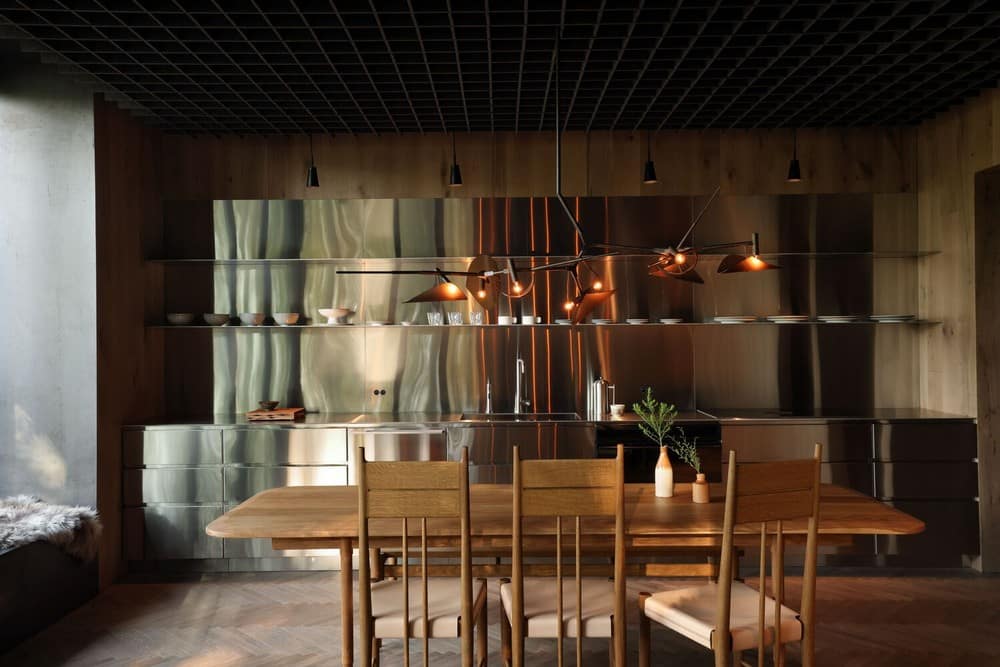
Continuing up the dimly lit and compressed stairwell provides access to the second floor. In contrast to the first floor and stairwell, the second floor is expansive and bright. A massive window set within a large cantilevered corten steel hoop wraps the southeast corner, with raw steel benches to sit and take in the view.
A wood-burning fireplace anchors the east wall with an antique Arne Norell lounge chair and furniture by Luca Nichetto and Montauk creating a spectacular setting for one or a small group. Along the west wall, the kitchen is composed of a simple series of protruding stainless steel shelves and a bank of stainless steel millwork. Set quietly amidst the stainless wall are a series of Fisher & Paykel appliances which seemingly vanish within the composition.
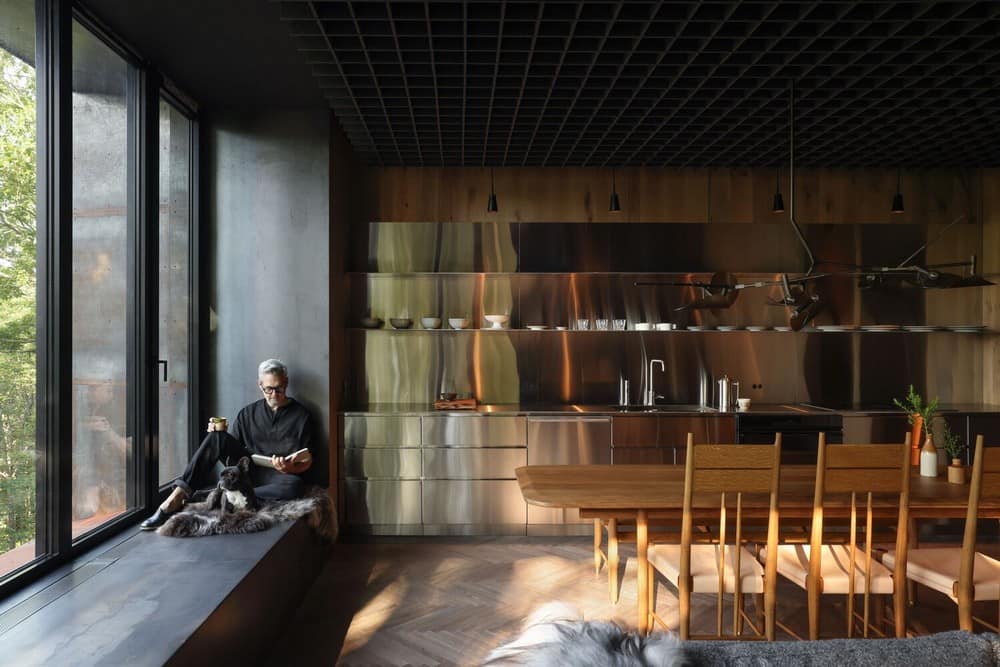
Spanning the threshold between living room and kitchen, a white oak dining table designed in collaboration with Mjolk and chairs and benches designed in collaboration with Nick Mazerolle and Hannah Newton infuse the space with warmth. A chandelier designed in collaboration with Concord Lighting is suspended through the dark waffled ceiling, providing a focal point for the central gathering space.
The furniture and lighting evoke a feeling of timelessness and craft found in shaker and traditional Japanese furniture. Their highly exaggerated and mannerist proportions are reminiscent of the practice’s approach to architecture. The juxtaposition of highly crafted, textured contemporary and antique pieces with the clean stainless and raw steel accents is purposefully peculiar, invoking a sense of both joy and intrigue.
The second floor is lined with an array of micro-herringbone weathered oak flooring with inlaid black raw steel for the fireplace hearth. Atop the wood floor is a traditionally woven patchwork Turkish rug. A series of delightful contradictions.
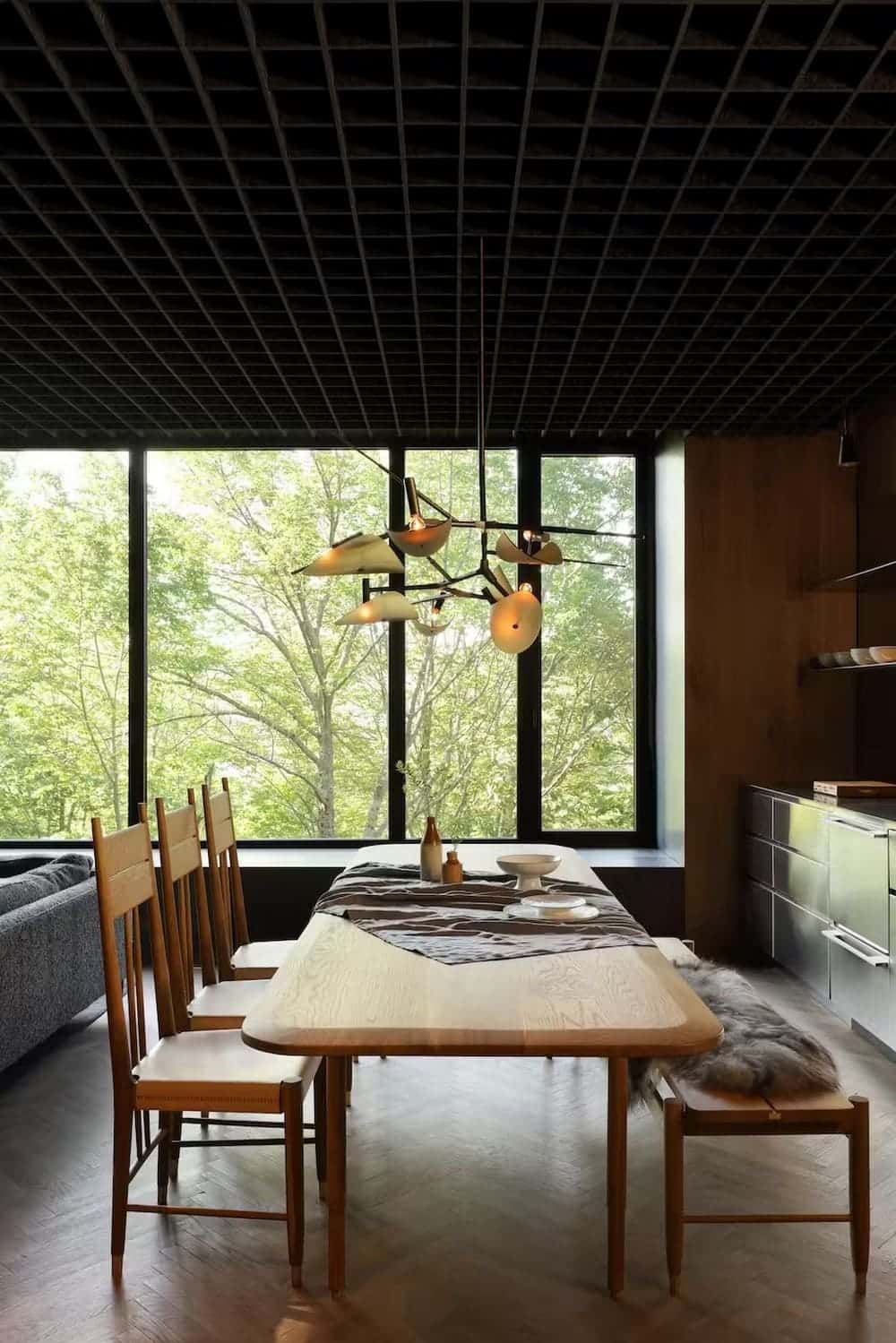
A corten steel roof hatch provides access to the rooftop, providing a secluded respite for dining and resting amongst a collection of Japanese maple trees with views across the tree canopy of the Gaspereau Valley below. For those seeking a retreat like no other, White Rock House offers an opportunity to immerse themselves in nature’s magic, embrace rawness, and engage in reflection and meditation amidst the lush woods of Gaspereau Valley.

